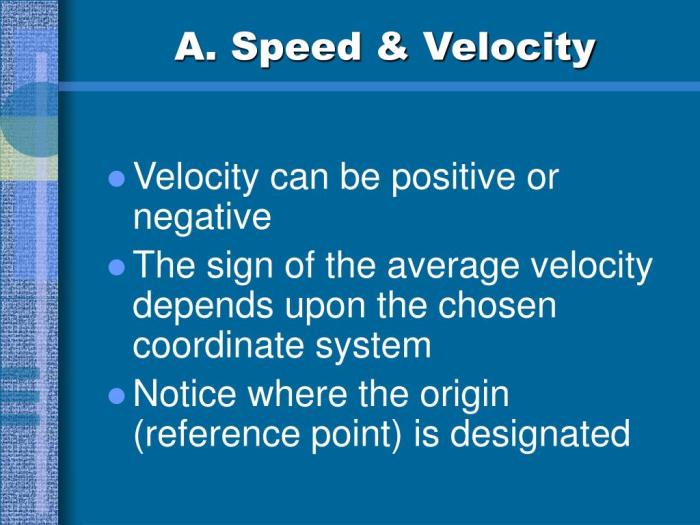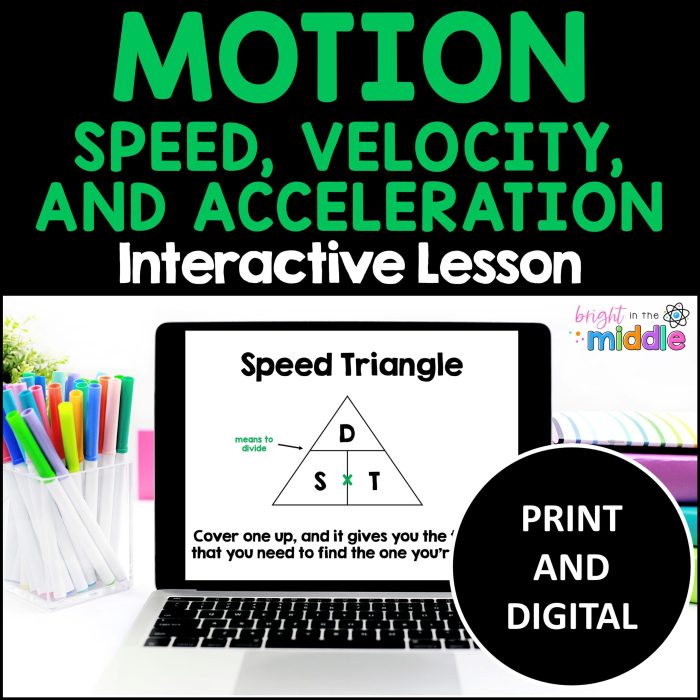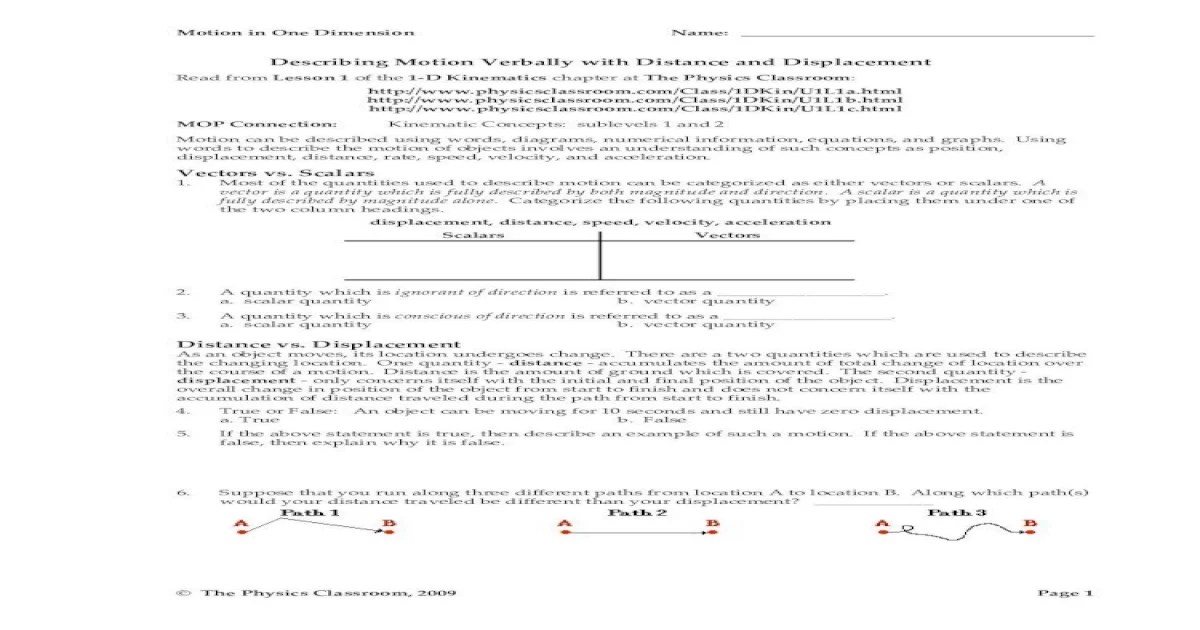Describing motion verbally with speed and velocity – Embarking on a journey into the realm of motion, we unveil the art of describing it verbally, employing the concepts of speed and velocity. This exploration delves into techniques for conveying the essence of motion, empowering us to paint vivid pictures with words.
Speed and velocity, though intertwined, possess subtle nuances that shape our verbal descriptions. We delve into their definitions, unraveling the intricacies that distinguish them. Techniques for verbally capturing the essence of speed and velocity are explored, equipping us with a lexicon of adjectives and adverbs to convey a spectrum of motion.
Describing Motion Verbally with Speed and Velocity

Describing motion verbally requires precise language that conveys the speed and velocity of moving objects. Speed refers to the rate of motion without regard to direction, while velocity includes both speed and direction. Understanding the difference between these concepts is essential for effective communication in various fields.
Speed and Velocity Definitions
Speed measures the distance traveled per unit time, typically expressed in meters per second (m/s) or kilometers per hour (km/h). Velocity, on the other hand, measures the rate of displacement, which is the change in position of an object, per unit time.
Velocity is a vector quantity, meaning it has both magnitude (speed) and direction.
For example, a car traveling at a speed of 60 km/h has a velocity of 60 km/h due north if it is traveling in that direction.
Verbal Descriptions of Speed
To verbally describe speed, use adjectives and adverbs that convey the rate of motion. Some common adjectives include:
- Slow
- Moderate
- Fast
- Rapid
- Breakneck
Adverbs can also be used to describe speed, such as:
- Quickly
- Slowly
- Swiftly
- Deliberately
- Frantically
For example, “The car sped quickly down the highway” effectively describes the speed of the car.
Verbal Descriptions of Velocity
To verbally describe velocity, include both speed and direction. Use the same adjectives and adverbs as for speed, but add information about the direction of motion. For example:
- The plane flew swiftly eastward.
- The runner dashed rapidly toward the finish line.
- The wind blew gently from the south.
Comparing Speed and Velocity Descriptions
Describing speed and velocity verbally involves similar language, but with key differences. Speed descriptions focus on the rate of motion, while velocity descriptions include both speed and direction. Adjectives and adverbs used for speed descriptions can also be used for velocity descriptions, but velocity descriptions require additional information about the direction of motion.
Applications of Verbal Descriptions
Verbal descriptions of motion with speed and velocity find applications in various fields:
- Sports:Describing the speed and velocity of athletes, such as the speed of a runner or the velocity of a thrown ball.
- Transportation:Communicating the speed and velocity of vehicles, such as the speed limit on a highway or the velocity of an airplane.
- Science:Describing the speed and velocity of objects in motion, such as the speed of sound or the velocity of a projectile.
Illustrative Examples
| Speed | Velocity | Adjectives | Adverbs | Example Sentences |
|---|---|---|---|---|
| Slow | Slowly westward | Lethargic, sluggish | Gradually, deliberately | The turtle crawled slowly across the path. |
| Moderate | Moderately northward | Steady, average | Consistently, evenly | The car drove moderately along the road. |
| Fast | Rapidly eastward | Swift, speedy | Quickly, swiftly | The cheetah ran rapidly across the savanna. |
Additional Considerations, Describing motion verbally with speed and velocity
When verbally describing motion, consider the context and the perspective of the observer. The language used should be appropriate for the intended audience. For example, a scientific report may use precise technical terms, while a sports commentary may use more colloquial language.
Question & Answer Hub
What is the key difference between speed and velocity?
Speed measures the rate of motion without regard to direction, while velocity incorporates both speed and direction.
How can I effectively describe speed verbally?
Use adjectives and adverbs that convey a sense of pace, such as “rapidly,” “slowly,” or “at a brisk pace.”
What are some examples of verbal descriptions of velocity?
“The car sped eastward at 60 miles per hour.” “The runner dashed towards the finish line with incredible velocity.”


